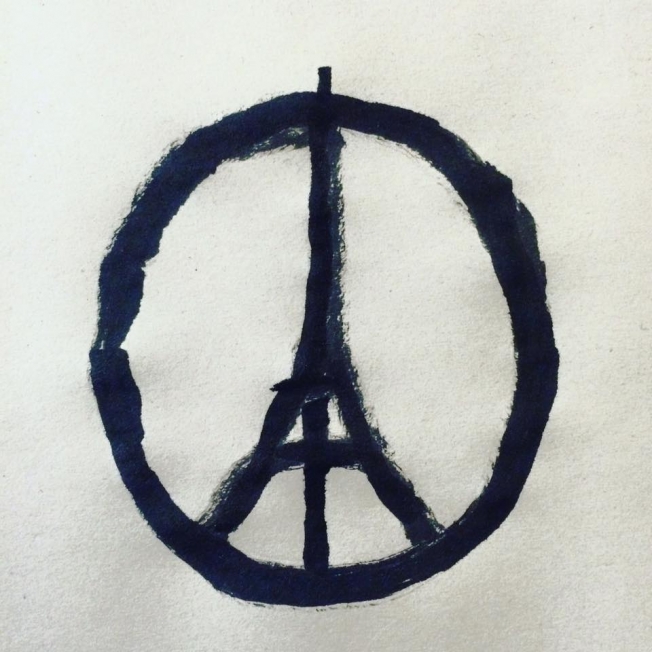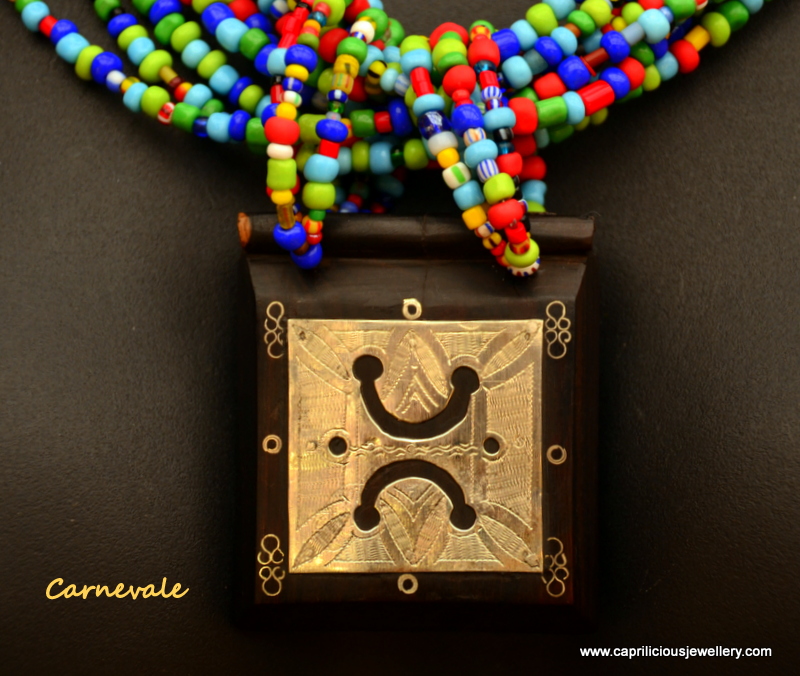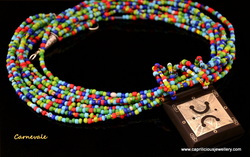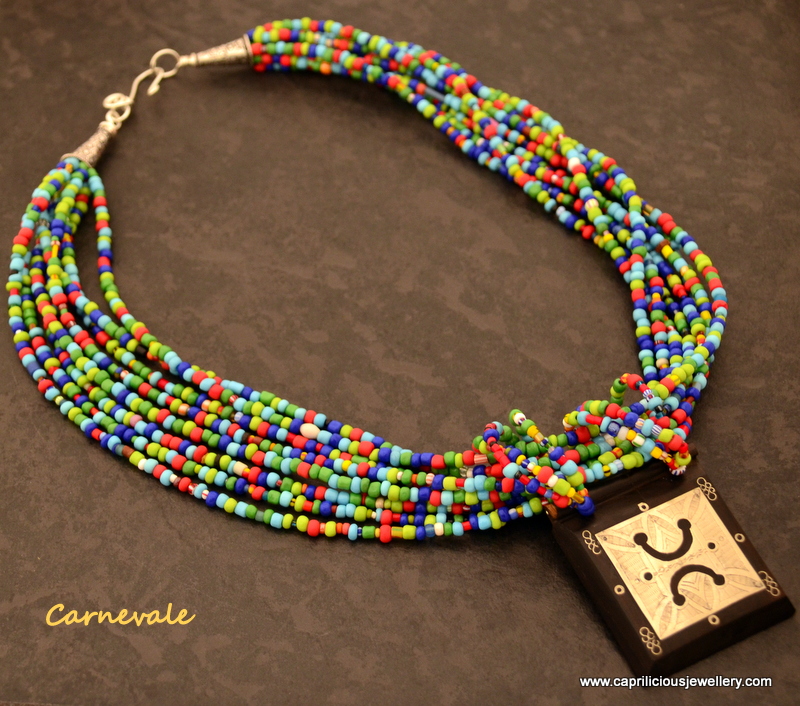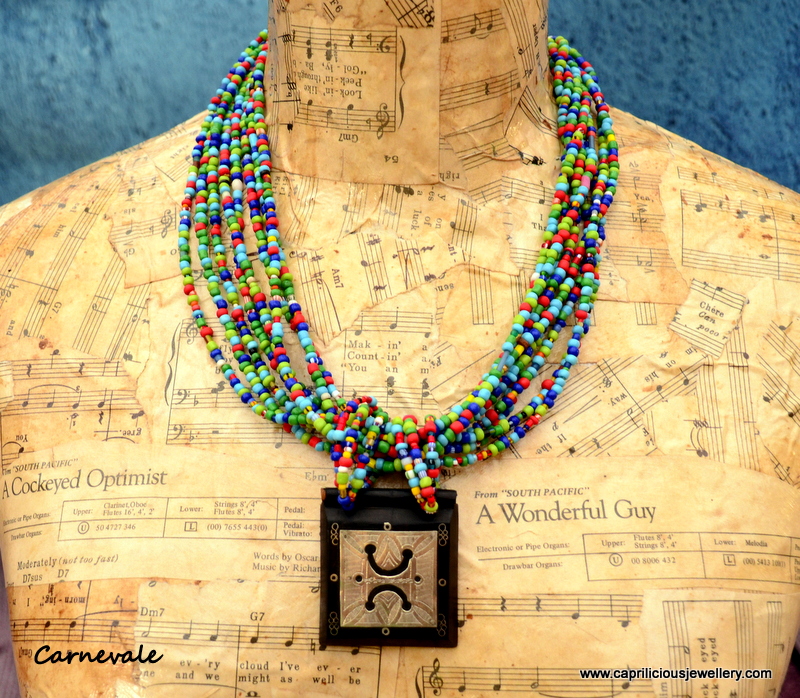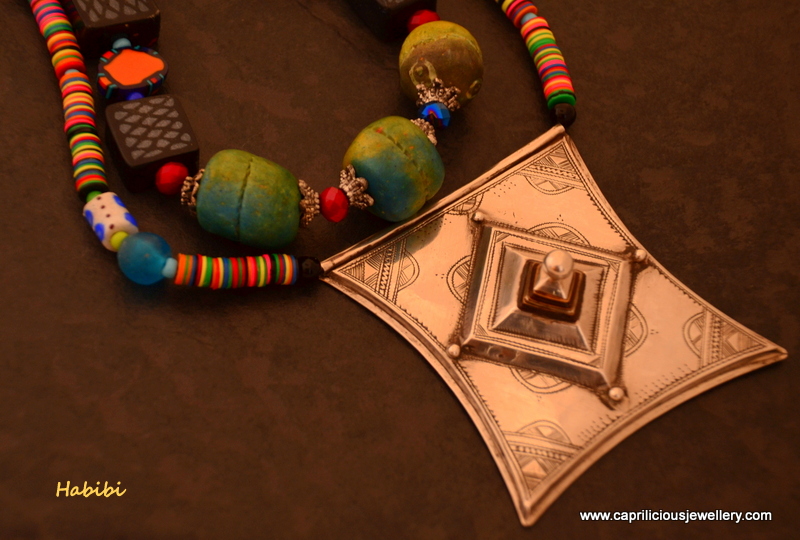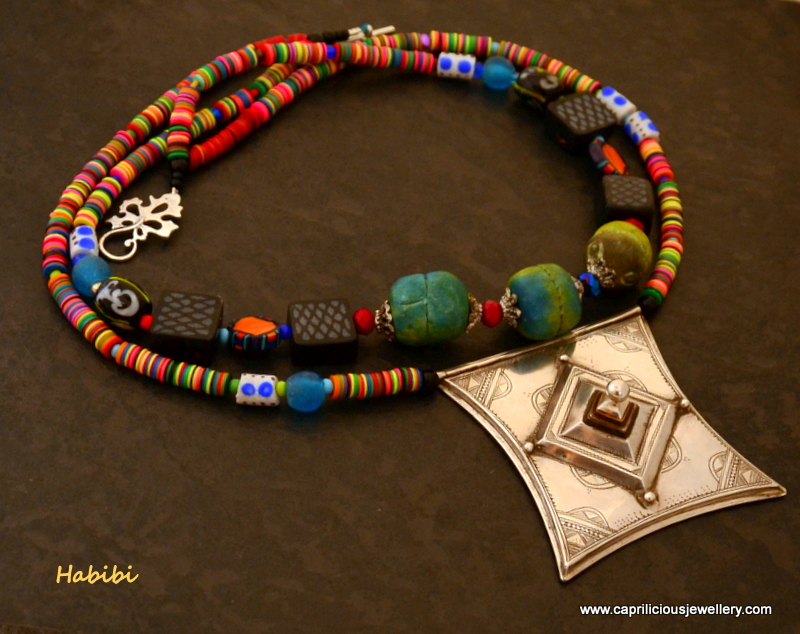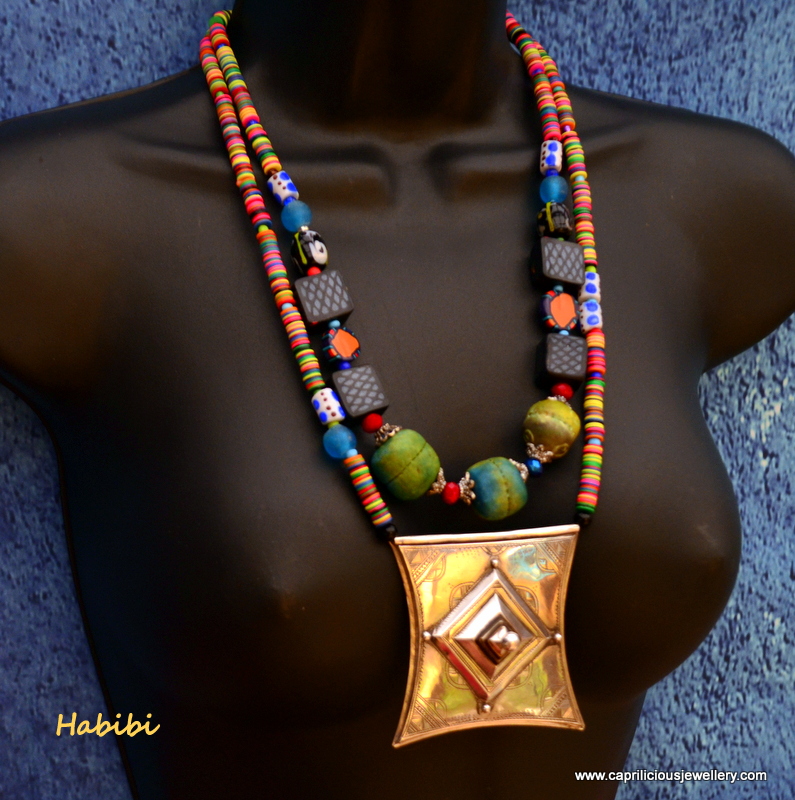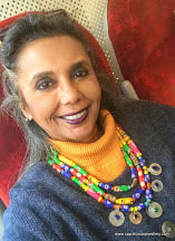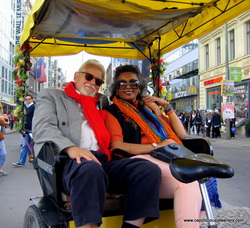|
Beautiful Handmade Statement Necklaces and other Fabulousness from Neena Shilvock - Inspirations and Designs From the Week Gone by
Hello readers, it has been such a long and heart wrenching week with the events unfolding in Beirut and Paris. The world has shrunk and is suddenly a scary place to live in, with one bunch of people blaming another, and violence erupting around innocent bystanders. In the words of Albert Einstein, "the definition of insanity is doing the same thing over and over again and expecting different results." My thoughts are with all the victims of the horrific attacks, as well as all those who will undoubtedly suffer serious discrimination as a result of the actions of a few mass murderers in the name of religion. It seems almost frivolous to talk about jewellery with the next breath, however, life goes on, and this is a jewellery blog. I almost had nothing to talk about, I couldn't bring myself to pick up my beads, my heart was so heavy. I made some earrings in a desultory manner, just to keep my fingers and mind occupied. Eventually, I picked up a hank of tiny African trade beads and began to string them. My subconscious seemed to crave colour on these depressingly grey days, glued to the television, watching events unfold with retaliation and retribution going back and forth until I was reminded of that age old question about the chicken and the egg.  The term "Trade Beads" typically applies to beads made predominately in Venice, the Czech Republic and other European countries from the late 1400's through to the early 1900's, and traded in Africa and the Americas. The Venetians dominated this market and produced the majority of the beads sold during this time. One of the most intriguing aspects to these beads is how they survived over a hundred years of wear and travel, back and forth through at least three continents. Another mystery is who wore them before and who will have them next.......after us! I managed to get an eight stranded necklace from the hank. The bright colours were cheerful and uplifting, and I certainly needed it this week. I recently acquired a few Tuareg pendants all the way from Rabat in Morocco. The one I used in this necklace is made of ebony, inlaid with 0.925% silver. Carnevale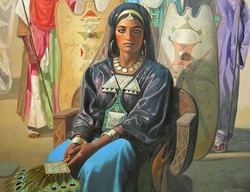 Queen Tin Hinan of the Tuaregs Queen Tin Hinan of the Tuaregs Tuareg culture has a long matrilineal strain: the Tuareg consider themselves descendants of a great female ancestress, Tin Hinan. Historically, women have held positions as tribal leaders, and they still enjoy great behavioral freedom. They go about unveiled (while the men cover their faces), they may divorce at will, own the family tent and control their own property. Amulets are worn to ward off evil, to protect family and livestock, and to cure diseases. They are traditionally worn by both genders and are part of everyday wear. Religious symbols may be carved into the amulets, and they are expensive. Silver is traditionally considered as pure and lucky, while gold is thought to be malevolent, unclean and wasteful. I love the versatility of tribal necklaces and am just as likely to pair them with T shirts as I am with more formal attire. There's also the allure of wearing accessories with a meaningful backstory. HabibiHere's another necklace, this time with a silver Tcherot amulet. The word Habibi means loved one, or darling. I added multicolour African vinyl beads, Krobo beads from Ghana and some polymer clay beads I made myself. The unique thin, multicoloured disc (heishi) beads are made with vulcanite, a vulcanized hard rubber and traces of vinyl. These beads were most likely produced in Europe (Czech Republic or Germany), and then exported to West Africa.The tcherot amulet in this necklace is three dimensional.  That is all I could bring myself to make this week, readers. I unconsciously used bright colours in an effort to cheer myself up and hope you have enjoyed them too. Take care and stay safe, I cannot see this crazy conflict ending any time soon. In the meantime, have a good weekend, and I'll catch you next Friday, same place, same time xx
1 Comment
|
Follow
|
